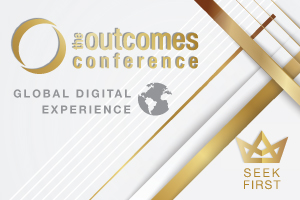
When Is the Best Time to Invest? By Sarah Newman

When is the best time for a nonprofit to invest?
In every portfolio construction presentation to nonprofit organizations, we anticipate this question: “What dollar amount is right to invest in our organization’s excess funds?” Some nonprofits want to start a foundation or endowment with a targeted dollar amount. Some organizations also look for an answer tied to their reserves in a money market vehicle beyond six months of operating cash or their annual budget. The answer for each organization is different; one size does not fit all. Each organization must evaluate key considerations before investing additional operating reserves or launching an endowment or foundation.
The First Step
First, we ask about when the funds need to be available to complete the organization’s goals. It is crucial to understand the organization’s short- and long-term goals. Possibly, the money needs to be allocated so that it can be obtained between now and 18 months from now, or the organization might need the money in two to three years. Perhaps, the money should be used as a long-term investment, beyond five years, or in perpetuity.
Timing & Type
Identifying the time horizon helps to define the purpose of the money. Once we know the money’s purpose, we step closer to answering the question of when the organization should start to invest, but we are not quite there yet. Next, we quantify risk tolerance. We ask, “How much is the organization willing to lose in a bad market?” The longer the time horizon for the funds, the greater the risk an organization can take. If the time horizon is between two and five years, we recommend a low-risk tolerance. A portfolio for longer-term assets can take on more risk, targeting a higher return and less liquidity, which allows for more alternative asset exposure. Quantifying time horizon and downside risk together helps determine the most appropriate asset allocation for the portfolio.
The Portfolio
Portfolio construction is not always a cookie-cutter solution. The following three examples show that one size does not fit all because of each organization’s differing needs. Organization A has short-term funds for a specific project in three years. The funds are in a money market, but they wonder if they could get more of a return while they wait for their project to begin. Their downside risk is low, and they need the liquidity to be extremely high. Your money should be safely invested in CDs, the money market, and short bonds with certain payments at maturity. We do not think the organization should take a risk with this money.
Anticipated Outcomes
Organization B has a strategic project with an intermediate time horizon of four to eight years. They have moderate downside risk and need moderate to high liquidity. In this circumstance, we recommend a portfolio targeting a 5.5% to 6.5% return based on forward capital markets assumptions. For an intermediate portfolio, we believe the addition of diversifiers can help improve the risk/return profile and smooth returns over time.
Organization C has money that they want for the long haul. Their time horizon is long, perhaps infinite, like a foundation or endowment. Their downside risk is higher, and their liquidity needs are moderate. For this portfolio, we recommend more aggressive and illiquid strategies such as private equity and debt, real estate, and real assets, which could return 6.5% to 8%. Again, the longer the time horizon, the more ability to tolerate risk and volatility.
Informed Decisions
We can never predict the markets. As demonstrated by these three examples, many factors must be considered. Time horizon is the starting point for all investment decisions but in conjunction with identifying appropriate risk tolerance. After meeting these criteria, informed conversations can occur regarding how to allocate the funds currently in a money market and when the best time to invest should be for your organization.
####
Sarah Newman is a Vice President at Innovest Portfolio Solutions and is responsible for business development in the faith-based and secular nonprofit markets. Sarah has over 19 years of experience in nonprofit development, marketing and event planning, and business development. Sarah has also been a small business owner for 15 years.

What is Christian Leadership Alliance?
Christian Leadership Alliance equips and unites leaders to transform the world for Christ. We are the leaders of Christ-centered organizations who are dedicated to faithful stewardship for greater kingdom impact.





